Indoor climbing gym facilities provide a safe and convenient environment for you to practice your climbing skills. Still, climbing can be most enjoyed in the great outdoors where rock, scenery and weather are constantly changing.
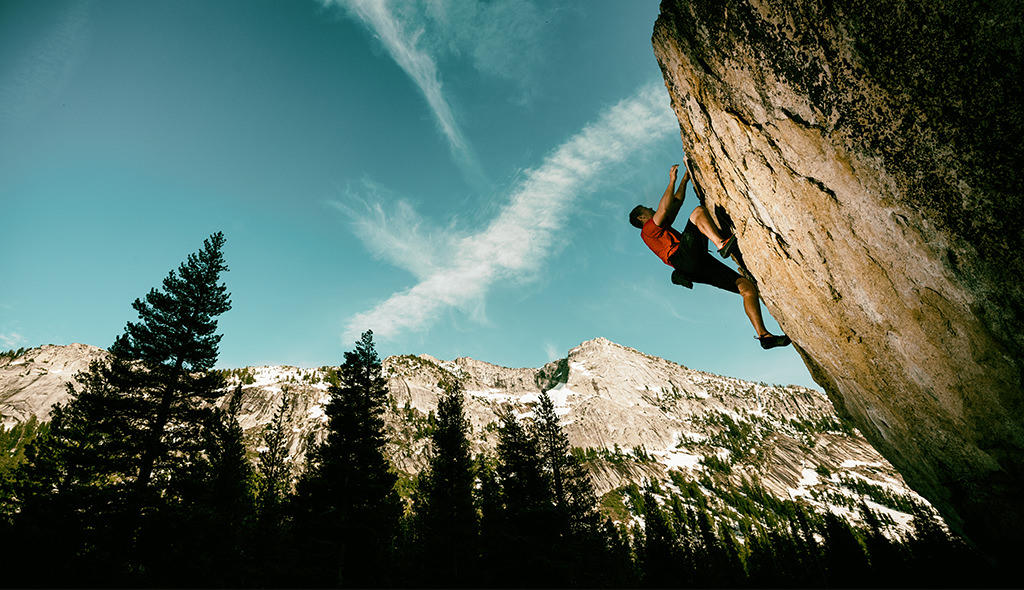
Because both indoor and outdoor climbing have many of the same gear requirements and utilize many of the same skills, if you are comfortable climbing indoors, you might want to consider trying it outside. It’s important that you understand that while the outdoor world requires similar knowledge and skill to gym climbing, it also presents additional challenges. This means you need to be well prepared, have the right gear and be ready to master new skills.
The first step to transitioning to outdoor climbing will be to find a qualified instructor with experience in teaching beginning outdoor climbers. A good instructor will teach you how to climb in the elements as well as more advanced skills like setting and cleaning your own anchors. Keep in mind that some gyms offer classes to help you transition; they can be a good place to start.
You’re going to want to begin your outdoor climbing adventure with top-rope climbing. Unlike the gym, your local crag won’t have the top ropes set up for you, so you’ll have to buy your own rope climbing gear and learn to set it up yourself. Borrowing climbing gear isn’t recommended because you can’t be certain how much use it has, and this could pose a serious safety hazard. Here is the essential gear you’ll need to get started.
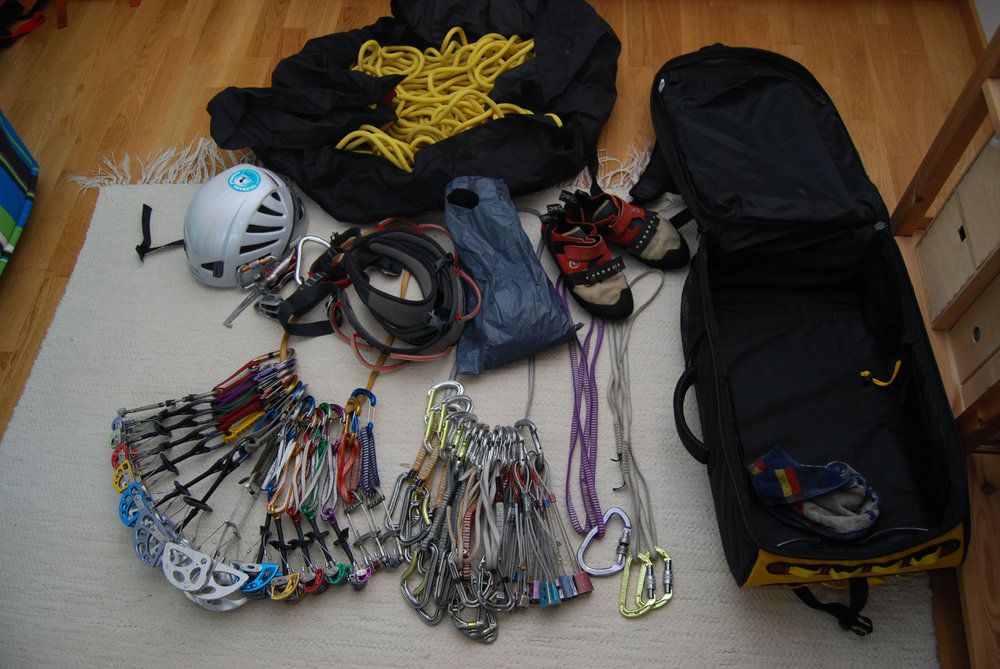
Climbing Helmet
This is a must-have piece of gear to buy for climbing outside and you should wear it every time you climb. A helmet will protect your head from falling debris or rocks as well as in the event of a fall. Make sure the helmet you choose is high quality, meet safety standards, fits snugly but isn’t uncomfortable.
Climbing Shoes
If you’ve been renting climbing shoes at the gym, you’ll need to buy a pair to be able to climb outdoor. The right rock shoes will protect your feet and at the same time provide friction for gripping footholds. To be right, your rocking shoes need to match the shape of your foot, allow you to feel your toes and proved good friction. Keep in mind that rock shoes aren’t designed for walking and doing so can ruin them.
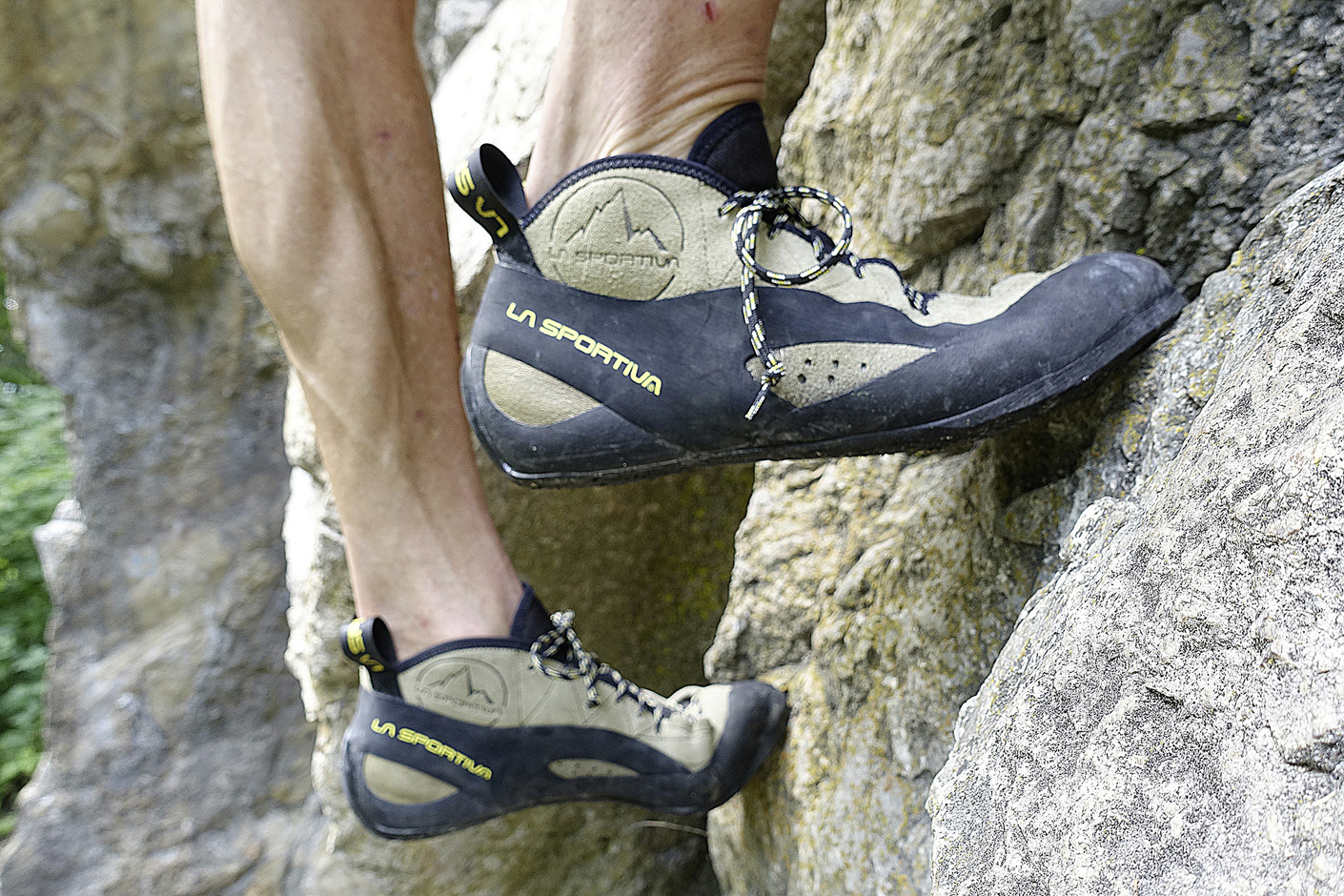
Climbing Rope
You may be wondering what type of rope is used for climbing outdoors. Well, there are two main types of climbing ropes: dynamic and static. Dynamic ropes are built to stretch, so they absorb the impact of a falling climber. Static ropes, on the other hand, stretch very little, which makes them quite efficient in situations like lowering an injured climber or hauling a load up. For top-roping you will want to use a dynamic rope type.
When shopping for dynamic rope climbing gear, you’ll have three options to choose from: single, half and twin ropes. Most climbers use single ropes. The term “single” means the rope is designed to be used alone and not paired with another rope as some other types of rope are. Available in many different diameters and lengths, single ropes can be used in a wide range of climbing disciplines. They also tend to be easier to handle than two-rope systems. It’s extremely important that you use only ropes designed and tested for climbing.
As for diameter, if you’ll be top-roping at the local crag you’ll probably want a thicker rope. It’s true that skinnier ropes are lighter, but they’re also less durable and require more skill to safely belay with. Thicker-diameter ropes tend to be more resistant to abrasion and often stand up better to frequent use, the reason why you should consider using them. If you’ll be hiking long distances for multi-pitch climbs then a skinnier, lighter rope might be a better option.
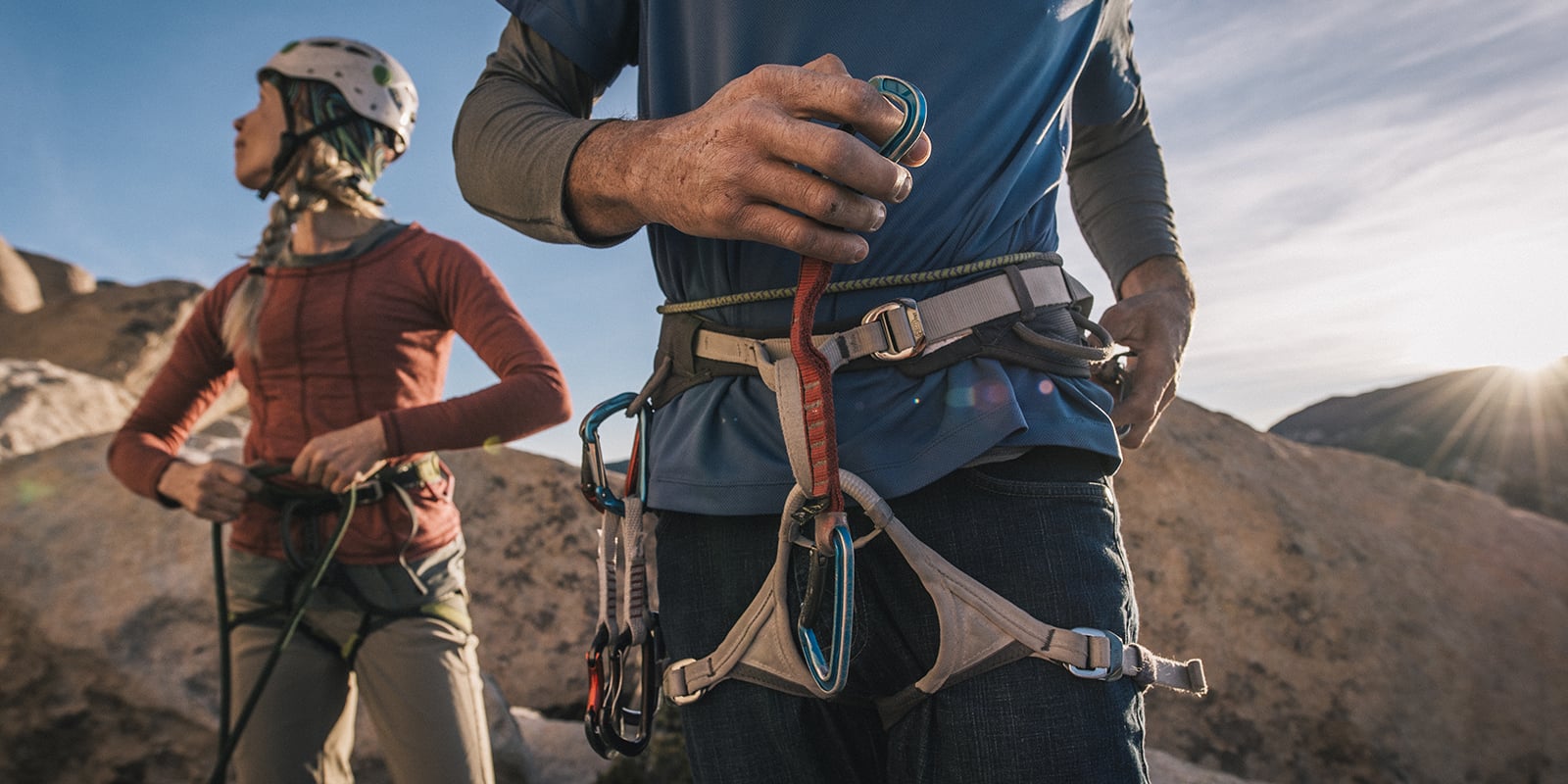
When deciding what rope length to get, there is a general rule you’ll want to use: half of its length should be equal or longer than the route or pitch you’ll be climbing. For example, for a climbing route that is 30 m long, you’ll need a rope that is at least 60m so you’re able to climb up and be lowered back down.
Harness
It’s important that you choose a harness designed for sport climbing. With this type of sport, climbers don’t have to hang heavy gear from their harnesses, so the harnesses are built with minimalist design features like fewer gear loops. And because many sport routes are single pitch and don’t require hanging all day in a harness. they also have thinner leg loops and waist belts. Eliminating the necessary features from a harness makes it much lighter, which allows the climber to push harder.
Belay Device and Carabiner
No matter which braking device you prefer to use, tubular or assisted braking, you should have your own for climbing outside. Make sure you buy a carabiner designed to be used with a belay device.
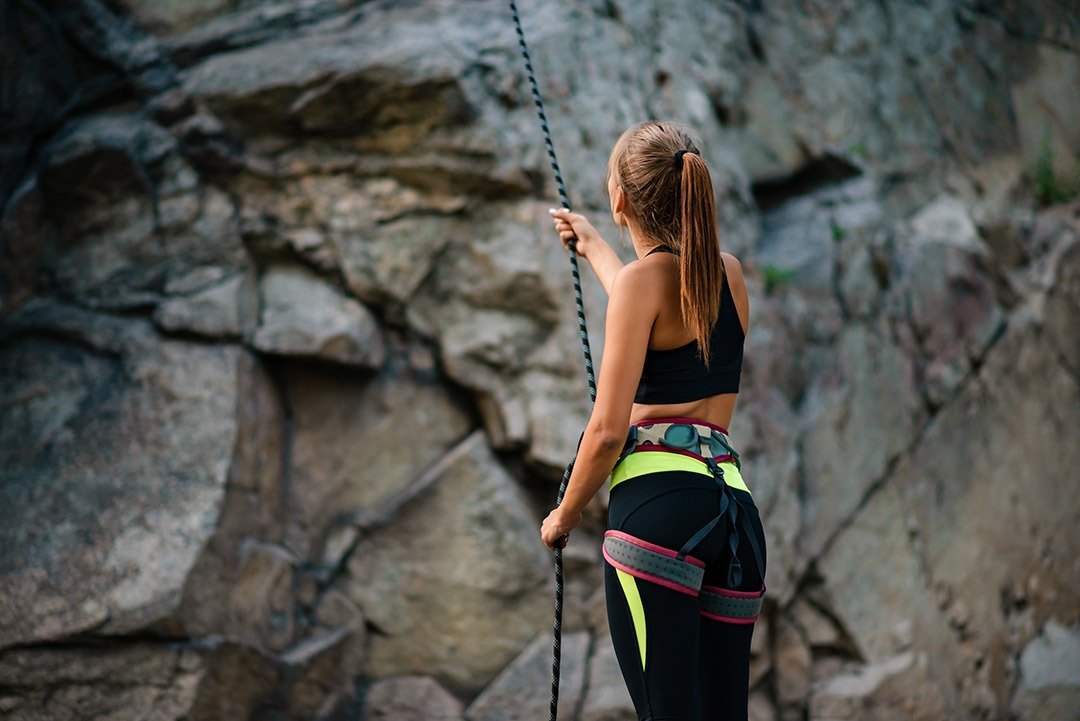
Anchor Equipment
The routes you will start climbing may be equipped with bolts and chains, but you’ll have to set up an anchor from which to hand a top rope. This means you’ll need at least an 8 metres of 7mm cordelette and at least four locking carabiners, being two for the rope side and two for the anchor side.
Hiking ShoesIn addition to a pair of climbing shoes, you’re also going to need a good pair of hiking shoes. Unless your crag is accessible directly from the parking lot, chances are you’ll be doing some hiking to get to the designated climbing area. Aside from not being comfortable for hiking, your climbing shoes will wear out quickly, the reason choosing a good pair of hiking boots is essential for getting to your climbing destination.
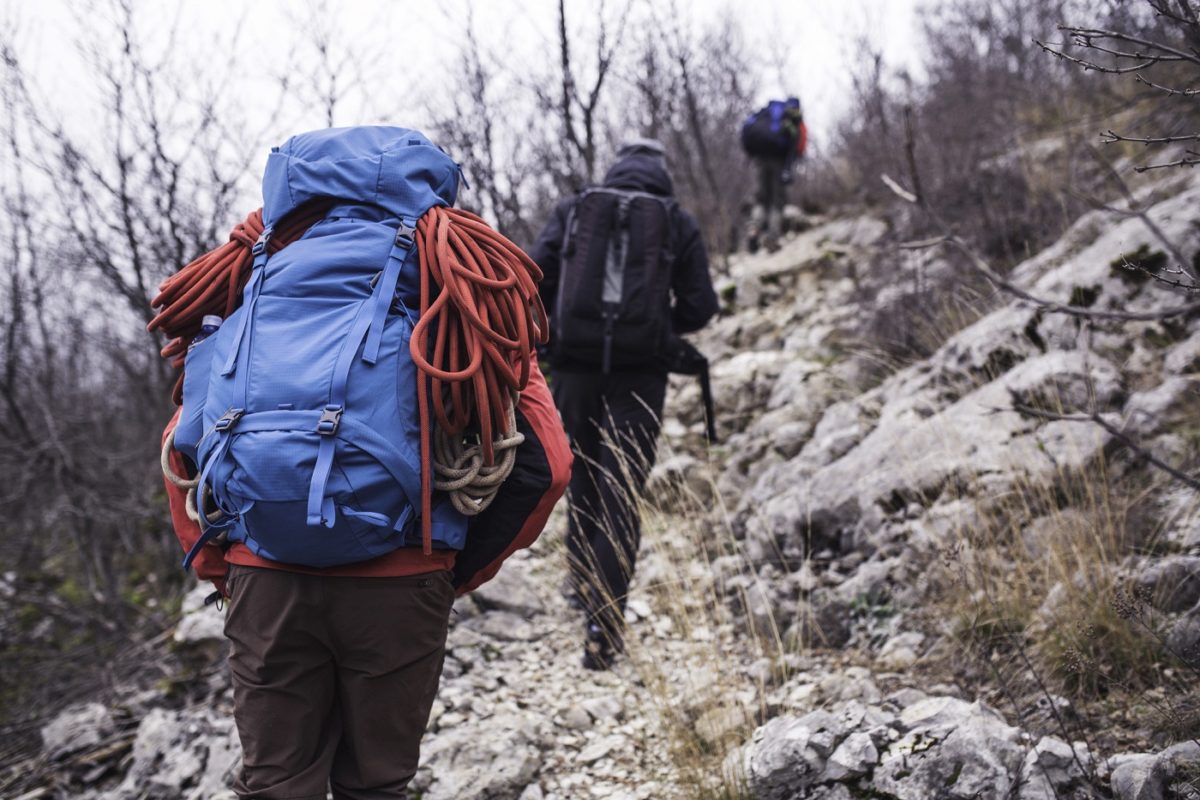
Backpack
Of course, you’ll need a backpack to carry your gear from your vehicle to the climbing area. While any backpack will do, those designed specifically for hiking offer greater features for storing your gear and hope. You may want to invest in a rope bag as well, to avoid flaking out your rope climbing gear in the dirt, which could lead to degradation over time.












